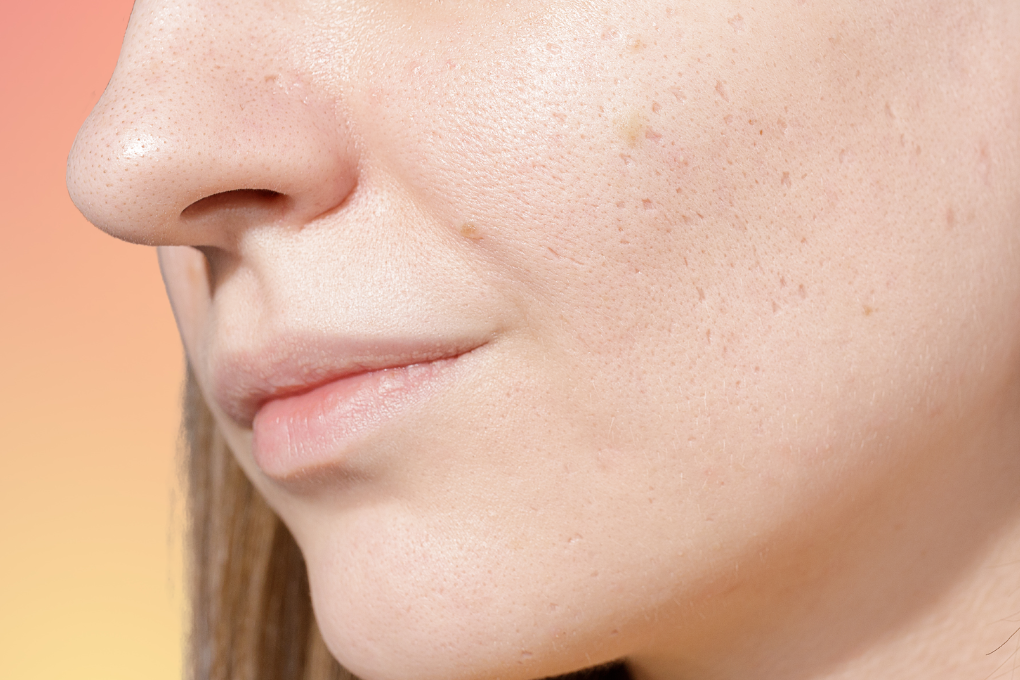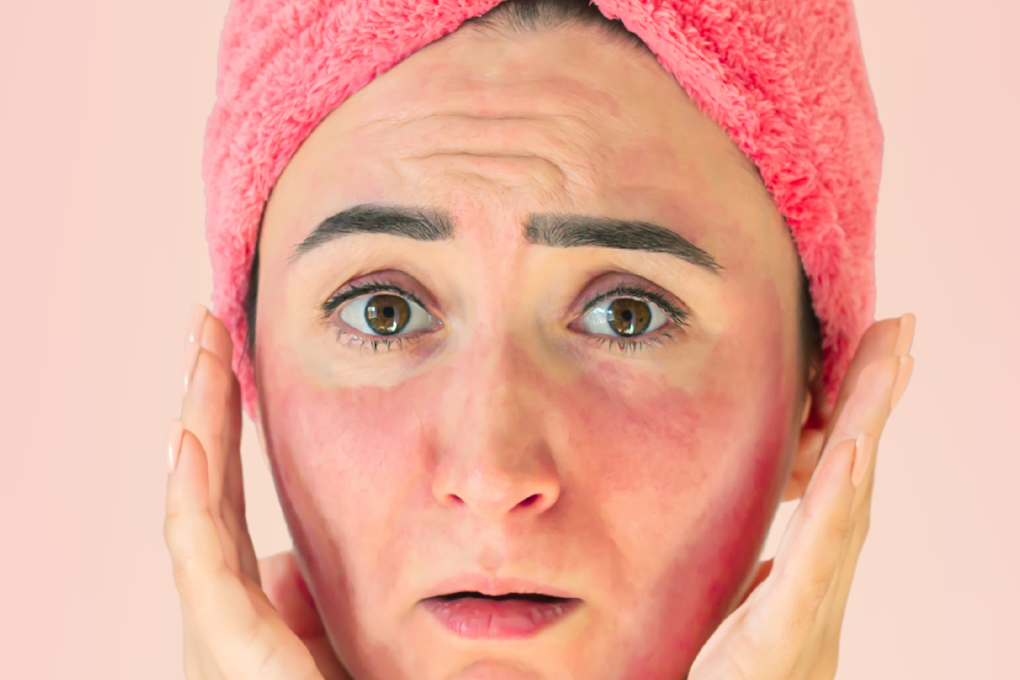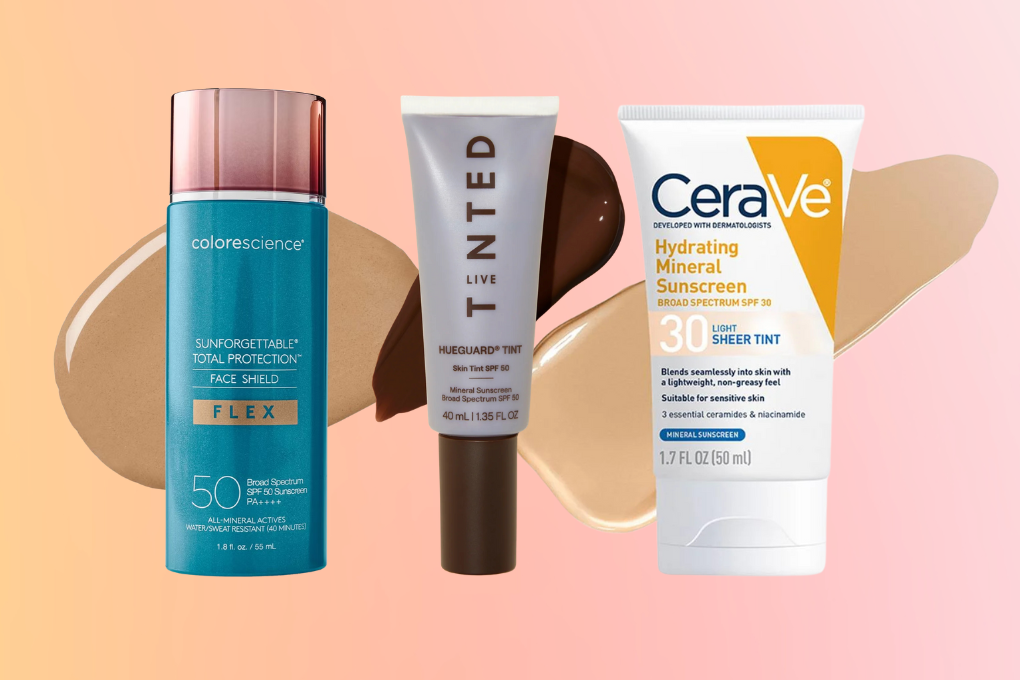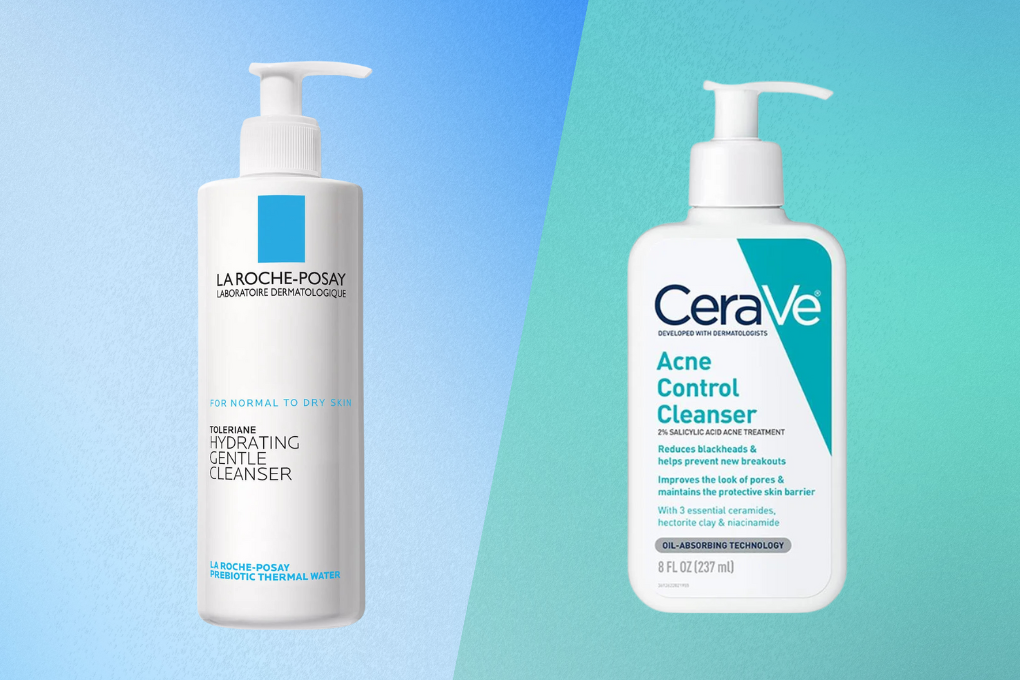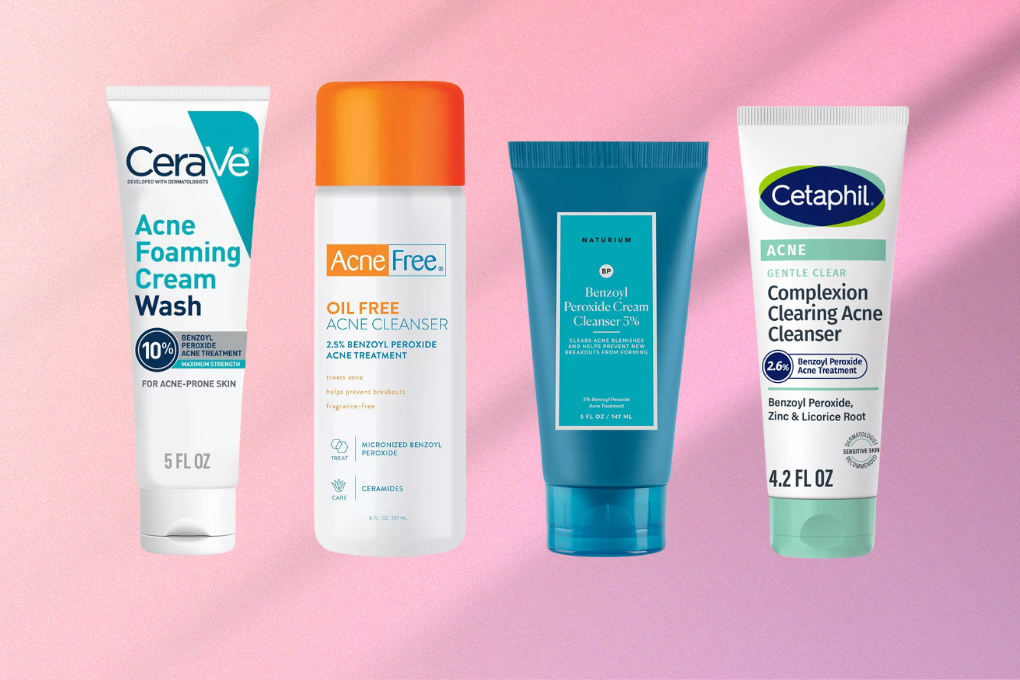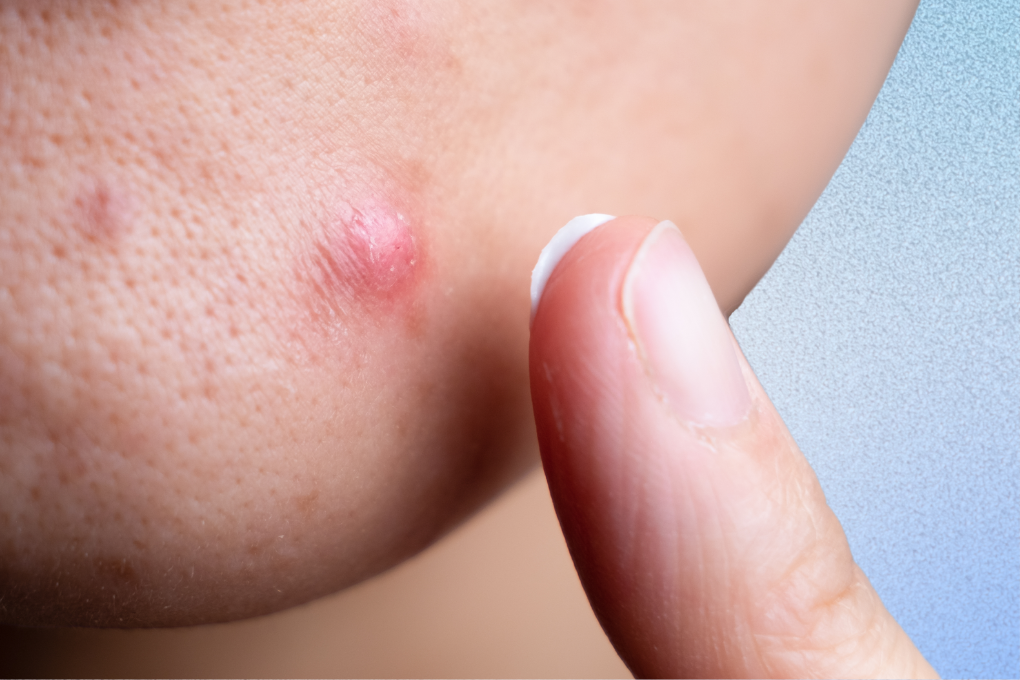It’s a bittersweet moment when you realize that you’re finally at the point where active acne is no longer constantly on your mind, but the acne scars left behind show that your skin is not as quick to forget.
While having acne scars is nothing to be embarrassed about (some people find that their scars add character to their face and make them more unique), if you are bothered by your acne scars and would like to reduce their appearance, there are many treatment options available for all types of scars.
What Are Acne Scars?
Acne scars form when there is a disruption in the normal healing process of the skin following a pimple or acne breakout. When you have a large pimple, it can mess with the deeper layers of your skin. In some cases, the inflammation and tissue damage caused by acne can affect the production and organization of collagen, which is essential for healthy skin structure. As a result, the skin may not heal smoothly, leading to the formation of scars.
Imagine you have a wall that’s been damaged. If you patch it up hastily, the repair might not blend perfectly with the rest of the wall. If too much plaster is used, it creates a bump (like a hypertrophic scar), but if too little is used, it leaves a dent (similar to an atrophic scar). This is similar to how the skin heals after acne, sometimes creating raised or indented scars based on how collagen is used in the healing process.
The likelihood of scar formation depends on factors like the severity of your acne, delay in treating it, genetic predisposition, and skin type. There are many treatments available to help the appearance of acne scars, but preventing acne and treating it early are the most effective ways to reduce the risk of scar formation. And don’t pop your pimples! Popping pimples interferes with your skin’s healing process and can push the pimple deeper into the skin. This can lead to increased inflammation and damage to the surrounding skin tissue, which increases the chance of scarring.
Acne Scars vs. Post-Inflammatory Hyperpigmentation
Acne scars and hyperpigmentation are two different skin conditions that are often confused with one another.
True acne scars are the result of damage to the skin caused by severe acne, usually cystic. They are permanent changes in the texture and appearance of our skin, which can include indentations, raised areas, and uneven texture. Acne scars occur when our skin’s healing process is disrupted, and our body produces too much or too little collagen in response to the damage. There are different types of acne scars, including ice pick scars, rolling scars, boxcar scars, and raised scars.
Post-inflammatory hyperpigmentation (PIH), on the other hand, is a temporary condition that results in the darkening of the skin. PIH occurs when inflammation causes an overproduction of melanin, the pigment that gives color to our skin. This excess melanin accumulates in the affected area, resulting in the development of dark spots. PIH can occur in people of all skin types, but it is more common in individuals with darker skin tones.
The key difference between acne scars and hyperpigmentation is that acne scars are permanent changes in the skin’s texture, while hyperpigmentation temporarily affects the color of the skin. While both conditions can be treated, the approach will be different. Acne scars require more aggressive treatments, while PIH can often be treated with topical creams and serums.
Are Acne Scars Red?
Acne scars are not necessarily red, but they can be red in the beginning when they are relatively new or healing after recent pimples. The red or pinkish color left behind after a pimple is often referred to as post-inflammatory erythema (PIE). This redness is typically due to increased blood flow and inflammation where the pimple was.
PIE can occur without true acne scarring when your skin has red marks from previous breakouts, but there is no change in the texture of the skin. True acne scars are a change of texture that causes an indented or raised area. These acne scars are often red in the beginning, but over time, the redness may fade as the scar matures and remodels. Older acne scars are usually skin colored.
While these red marks will fade over time, you can help them on their way with some topical products such as azelaic acid and retinoids, and professional treatments such as a pulse dye laser. Regular use of sunscreen is crucial as UV exposure can worsen PIE and prolong its duration.
Types of Acne Scarring
Unlike PIH and PIE, acne scars create a permanent change in the texture of our skin with either indented or raised scars. Before diving into acne scar treatment options, it’s important to understand the different types of acne scars. Each type of scar is formed differently, and as such, they require a unique treatment approach.
Atrophic or Indented Acne Scars
Atrophic acne scars are the most common and are usually located on our face. They are characterized by a loss of tissue, leading to indentations in the skin. When your skin is healing from a large pimple or cyst, it may not produce enough collagen to fill the space left by the acne. This imbalance in collagen production results in the depression or indentation, forming an atrophic scar. There are three main types of atrophic acne scars:
- Ice pick scars are deep and narrow, with a V-shaped indentation.
- Boxcar scars are broad and shallow, with steep sides.
- Rolling scars are broad and shallow, with a wave-like appearance.
Hypertrophic or Raised Acne Scars
Hypertrophic or raised scars occur when the body produces too much collagen while healing from an acne lesion. The excess collagen builds up on the skin’s surface, leading to a raised scar. These scars are seen more often where there was acne on the body, such as on your back, torso, neck, and chest. They are less common on the face compared to atrophic scars, but can appear on the jawline.
Hypertrophic scars are generally the same size as the acne lesion that caused them. They can vary in shape, but they often have a rounded, raised appearance. They may cause irritation or itchiness.
Can Acne Scars Go Away?
Are acne scars permanent? Unfortunately, acne scars are considered permanent and will not go away on their own. Scarring results from damage to the skin’s deeper layers, and the body’s natural healing processes may not fully repair this damage.
In terms of how long it takes for acne scars to improve, over time, the post-inflammatory erythema or hyperpigmentation of an acne scar will fade, and the edges might soften. Mild scars are more likely to fade on their own compared to deep or severe scars. To truly make acne scars go away, you will need professional treatment in order to reduce the appearance of their texture.
Acne Scars Treatment
Treatment options depend on the type of scars (see above), and you will need to consult with a medical professional to decide on the course of treatment that will help your individual scarring.
Below is a non-exhaustive list of acne scar treatment options:
Chemical Peels
Chemical peels involve applying a solution to the skin that exfoliates the top layer of skin, which can help reduce the appearance of acne scars. There are different types of chemical peels available, including glycolic acid, salicylic acid, and trichloroacetic acid (TCA) peels.
For icepick scars, a procedure with TCA called “chemical reconstruction of skin scars” (TCA CROSS) is sometimes used, where TCA is carefully applied to the base of the scar, which causes the skin to react and form a scab. As the scab heals and falls off, new skin forms in its place, which can help to fill in the depression caused by the scar. The TCA solution also stimulates collagen production, which can improve skin texture and tone.
Microneedling
Microneedling involves using a device with tiny needles to create small punctures in the skin, which triggers the body’s natural healing process and promotes the production of collagen. This can help reduce the appearance of acne scars.
In addition to traditional microneedling, there is also radiofrequency microneedling and platelet-rich plasma (PRP) microneedling. Radiofrequency microneedling combines microneedling with radiofrequency energy, which is a type of heat energy that can help to tighten and firm the skin. The device used for radiofrequency microneedling has needles that are insulated, so the energy is delivered directly to the deeper layers of the skin.
Microneedling with PRP involves combining microneedling with platelet-rich plasma (PRP), which is a concentration of growth factors derived from the patient’s own blood. The PRP is applied to the skin during or after the microneedling procedure, where it can help to promote healing and stimulate collagen production.
Laser Therapy
Laser therapy uses high-energy light to target the skin’s layers, which can help promote collagen production and reduce the appearance of acne scars. Your dermatologist will determine the best type of laser treatment for your acne scars, which will depend on the type and severity of your scars, as well as your individual skin type and concerns.
There are different types of laser therapy available, including:
- Fractional laser resurfacing: Uses a laser to create tiny columns of heat within the skin, which stimulates the body’s natural healing process and promotes the production of collagen and elastin.
- Non-ablative laser resurfacing: Heats the dermis, or the deeper layer of the skin, without damaging the surface layer.
- Ablative laser resurfacing: Removes the top layer of skin, which can help to reduce the appearance of shallow acne scars.
- Pulsed dye laser: Targets the blood vessels beneath the skin’s surface, which can help to reduce the redness and discoloration associated with some types of acne scars.
Dermabrasion
Dermabrasion is a skin resurfacing procedure that can be used to treat acne scars. During dermabrasion, a dermatologist or plastic surgeon will use a specialized instrument to remove the top layers of skin in a controlled manner. The treated skin should grow back smoother, which can help to improve the appearance of acne scars.
Dermal Fillers
Dermal fillers are injections of hyaluronic acid or other substances that can help fill in the depressions of some acne scars, giving the skin a smoother appearance. Dermal fillers can be a relatively quick and non-invasive way to improve the appearance of acne scars, and the effects can last for up to a year depending on the type of filler used.
Subcision
Subcision is a minimally invasive surgical technique that can be used to treat certain types of acne scars, particularly those that are tethered or anchored to the deeper layers of skin. Subcision involves using a needle under the skin to break up the fibrous tissue that is pulling the skin down and creating the depression. This can help release the tension and improve the appearance of the skin.
Punch Excision
Punch excision involves surgically removing the scar and suturing the skin together. After the procedure, the wound will heal and gradually fill in with new, healthy skin tissue. Over time, the appearance of the scar will become less noticeable. This is often used for deep acne scars, such as cystic acne scars, that cannot be treated with other methods.
Steroid Injection
For raised acne scars, which usually occur on the body, a small amount of corticosteroid medication can be injected by a doctor directly into the scar tissue. The steroid can help reduce inflammation and soften the collagen fibers in the scar. Over time, the combination of reduced inflammation and softened scar tissue can help the raised scar to flatten and become less noticeable.
At-Home Acne Scars Treatment
While effective treatments to reduce the appearance of acne scars should all be done by a medical professional, there are some things you can do at home to work on your scars. The most important thing is to continue your acne treatment to ensure that you prevent any new scars from appearing. Use gentle products and a simple skin care routine to protect your skin barrier, and if you do get a pimple, try to keep from picking or popping it, as that will increase the chance of scarring. Instead, use a hydrocolloid pimple patch, which will create a clean and moist environment for the pimple to heal.
Hero Cosmetics Mighty Patch Micropoint for Early Stage Zits and Hidden Pimples with 0.5% Salicylic Acid and Niacinamide
The classic Mighty Patch from Hero Cosmetics has a Micropoint version to help target deep pimples. The hydrocolloid patch provides protection and a good environment for healing, while 395 dissolving micropoints deliver salicylic acid under the skin where it can be most effective. Niacinamide, hyaluronic acid, and centella extract help hydrate and soothe, so your skin can heal. Simply press the patch into your pimple for 20 seconds, then leave for 6-8 hours.
- Effective on deep pimples when used early
- Salicylic acid to unclog pores
- Hyaluronic acid, niacinamide, and centella extract to hydrate and soothe
- Expensive if you need them often
While it will not fix the texture of acne scars, broad-spectrum is important to protect your skin and fade any discoloration that might make the scars more prominent. Long-term use of sunscreen will also protect the collagen in your skin from degradation, which may make scars more visible.
La Roche-Posay Anthelios Light Fluid Face Sunscreen Broad Spectrum SPF 60
The Anthelios Light Fluid Sunscreen from La Roche-Posay is a fan favorite for a fast-absorbing, very lightweight sunscreen with a matte finish. If you usually hate the feeling of sunscreen on your face, this might be a good one for you to try. This chemical sunscreen is formulated for sensitive skin and also includes antioxidant protection to prevent sun damage. It contains alcohol to help it absorb quickly and is water-resistant for 80 minutes, making it a particularly good option for sweaty summer weather.
- Lightweight and fast-absorbing
- Water-resistant for 80 minutes
- Antioxidant protection
- Alcohol may be irritating for some skin types
Colorescience Total Protection Face Shield SPF 50 with Zinc Oxide
Colorescience is known for its sunscreens and makeup products with SPF protection. Their Face Shield is a mineral sunscreen that contains 12% zinc and a tint that will help protect from blue light, UVA, UVB, and infrared rays, as well as hydrating and antioxidant ingredients. Face Shield comes in either the sheer original tint that will not show on light to medium skin tones, as well as a bronze shade to blend in on darker skin tones. This sunscreen is lightweight and will very subtly blur imperfections while providing SPF 50 protection.
- Water-resistant for 40 minutes
- Zinc oxide protection with tint
- Protects from blue light
- Only two tint choices
- Expensive
Using a retinoid is unlikely to affect severe scarring; however, it can help even out your skin tone by promoting cell turnover and stimulating collagen production, which can make scarring less noticeable. Like sunscreen use, retinoids can help fade any hyperpigmentation on the scars, which can make the texture less apparent.
Retinoids are also helpful to thwart any new acne from cropping up, which can help prevent more acne scarring over the long term. Retinoids are available over the counter in the form of adapalene and retinol. Prescription retinoids like tretinoin (Retin-A) and tazarotene (Tazorac) are stronger options that are available from your doctor.
La Roche-Posay Effaclar Adapalene Gel 0.1% Treatment
From La Roche-Posay's Effaclar line, which is designed for acne-prone skin, comes their adapalene 0.1% treatment gel. Adapalene is a prescription-strength retinoid available over the counter in the U.S. in 0.1% strength. It works by increasing cell turnover to help prevent acne and can be used to treat blackheads, whiteheads, clogged pores, pimples, and even KP bumps on the arms. La Roche-Posay's version comes in an effective fragrance-free gel that you apply in a thin layer to your face or body once a day.
- Maximum over-the-counter strength
- Non-greasy gel-like texture
- HSA and FSA eligible
- Expensive
If you are bothered by your acne scars, the unsolicited farewell gift of all forms of acne (including hormonal acne), there are fortunately many effective acne scar treatment options available. If you haven’t already, consult with a dermatologist to determine the best course of action for your individual needs.
If the cost of professional treatment for acne scarring is currently out of reach for you (unfortunately it is not usually covered by health insurance), don’t waste your money on advertised topical treatments that will not address the texture issues of acne scars, instead save that money to eventually be treated by a medical provider that you trust. In the meantime, make sure to keep up your acne treatment to prevent further scarring, use sunscreen every day to protect your skin, and consider a retinoid to help even out your skin tone and soften the appearance of scars.





